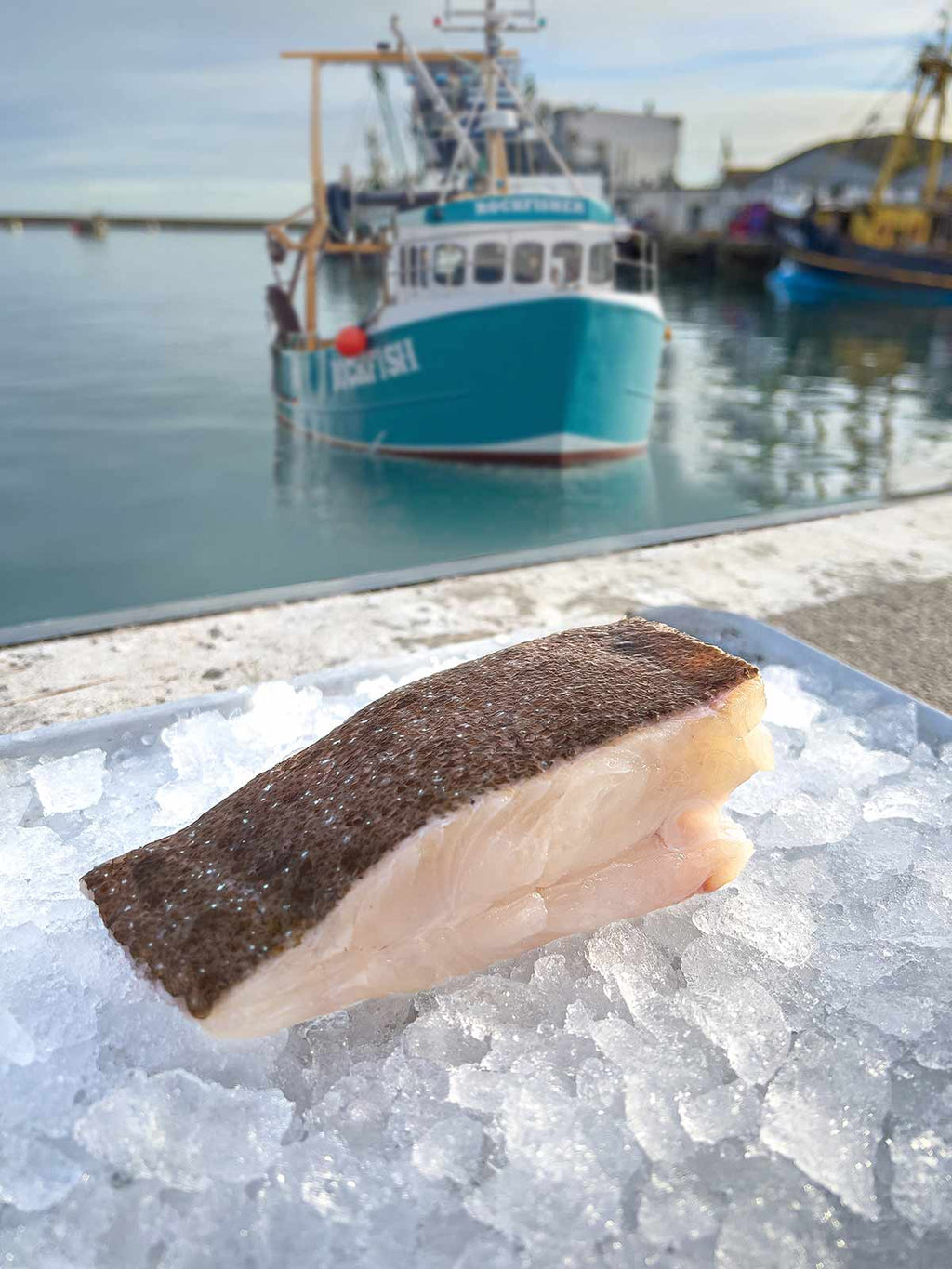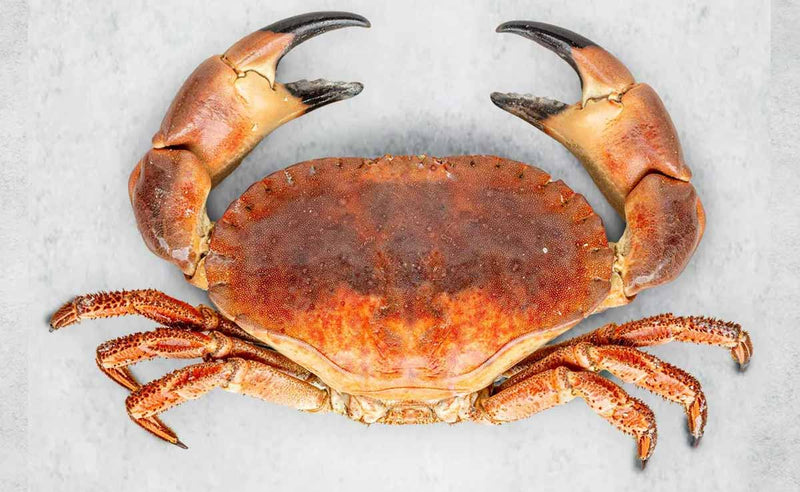The Cold, Hard Truth: Debunking The Myths About Frozen Fish
At Rockfish we always say fresh is best. Only a complete heretic would argue that a fillet of meaty black bream seared in sizzling butter within hours of being plucked from the sea is anything short of gastronomical Nirvana.
Given that the walk from our fish processing unit in Brixham to England’s largest fishing port is less that 20 metres, we are pretty confident that the fish you buy at Rockfish is some of the freshest in the country.
But does that mean we are against frozen fish? No way José. In fact, we’re staunch advocates of the stuff. Which is why we thought it’s high-time we helped untangle some of the myths about frozen fish...
MYTH 1: FROZEN FISH IS LOW QUALITY
It’s an old wives’ tale dating back to the 1980s, that frozen fish is inferior. When people think of frozen fish, they often think of indiscriminate lumps lurking in the bottom of the deepfreeze. Frozen in time like some Siberian fossil, only to become soggy, grey and rancid smelling when thawed.
But with the development of blast freezing this all changed! Your standard freezer (like you have at home) usually operates at roughly minus 18 degrees Celsius. Depending on how efficient it is, at this temperature it would probably take a day to fully freeze a large fillet of fish. This causes big ice crystals to form, which break the cell membranes in the flesh, resulting in that trademark soggy texture.
Blast freezers on the other hand, operate at minus 40 degrees Celsius and use high velocity air to rapidly bring your fish fillet to a state of solid freeze, often in less than 90 minutes.
The difference is like sitting in your car on an icy winter’s morning waiting to freeze vs. standing out naked in the Arctic tundra during a blizzard.
Blast freezing locks in the freshness as the ice crystals are much smaller, so that when the fish is thawed it returns to its pristine pre-frozen state.
When you see SENT FROZEN advertised on our Online Seafood Market, this fish has been blast frozen. Only hours before it was swimming in the sea. Its freshness and quality have been preserved.
In fact, the celebrated quality of blast frozen fish is so acclaimed now that any raw seafood in this country, for example sushi, must, by law, be previously frozen to kill any potential parasites. Previously frozen fish is now regarded as safer to eat than even raw fresh fish.
MYTH 2: YOU CAN’T RE-FREEZE FROZEN FISH
Seafood is a £9.5 billion industry in this country. Words like ‘fresh’ and ‘frozen’ matter to consumers. With many still regarding frozen fish as something to be avoided.
That’s why when you browse the fish counter of your local supermarket, or pick up a tranche of plastic wrapped salmon in the fish aisle it’s always fresh. Or, is it?
In reality that whole things a sham. That fish was almost certainly frozen before it was packed onto the shelves, only being thawed when it’s ready to be sold to give the impression of freshness. That’s because frozen fish has such stigma, we like to think that we’re buying something that was caught only days before. Inspect the back of that salmon tranche packet next time you’re out shopping. It’ll almost certainly read something along the lines of:
“This product has been previously frozen and defrosted...”
Often, this statement is followed up with the caveat, “but it is perfectly fine to freeze once again”.
There is truth in that. Blast frozen fish, provided it’s cold to touch – so it hasn't got warm enough for bacteria to proliferate – is perfectly safe to re-freeze and will not affect its quality. That is industry standard practice.
Hence why we advise that if any purchase from our frozen range was to arrive partly defrosted it is perfectly okay to pop in the freezer to enjoy another day.
MYTH 3: FROZEN FISH LOSES ITS TEXTURE
In 2019 the very official sounding Oregon State University Food Innovation Centre conducted a taste test on nearly 100 consumers to see if they could taste the difference between fresh seafood and that which had previously been frozen. Sure enough, they could not. With many actually saying the frozen seafood tasted better!
The researchers at Oregon state found the key is to look after your frozen fish, taking care to thaw it correctly. The two recommended ways to do this are:
1) Leave your fish delivery in the refrigerator overnight. If you do this it’s good practice to open up the packet so you don’t create an oxygen deprived atmosphere.
2) If you’re in a rush you can submerge the packet in tepid water (not hot water) to thaw the fish in under ten minutes. This is actually preferential, as rapid melting of the small ice crystals will prevent damage being caused to the flesh.
MYTH 4: FROZEN FISH IS BAD FOR THE ENVIRONMENT
Fish doesn’t stay fresh for long. Their chemical makeup, and the fact that they’re cold blooded, means they start to decompose far quicker than any mammal meat you might have in the fridge.
This can put some consumers off. Seafood is sometimes seen as a bit of a ticking time bomb in your fridge. It can be a pressure to find time to cook before it goes off. Freezing stops this worry, and stops delicious fish being unnecessarily wasted.
At Rockfish we know if our Mitch’s Picks fish are going to sell within hours of them arriving with us. Any unsold stock is able to be instantly frozen and preserved for another day. Allowing us to operate an entirely zero waste system across our Online Seafood Market.
This is revolutionary as it slows the rapid pace at which stocks have to be replenished, putting much less pressure on fisheries.
THE BOTTOM LINE
Cooking fish at home has traditionally been seen as something we only do on special occasions. It takes planning and organisation with people thinking fish needs to be bought and eaten all on the same day.
Blast Freezing stops all this. You can order from our Online Seafood Market and have a healthy, nutritious emergency meal that can be prepared in under 10 minutes whenever you need it.
At Rockfish our motto is ‘tomorrow’s fish are still in the sea’. But for the purposes of this, tomorrow’s fish could just as easily be waiting for you right there in your freezer...



